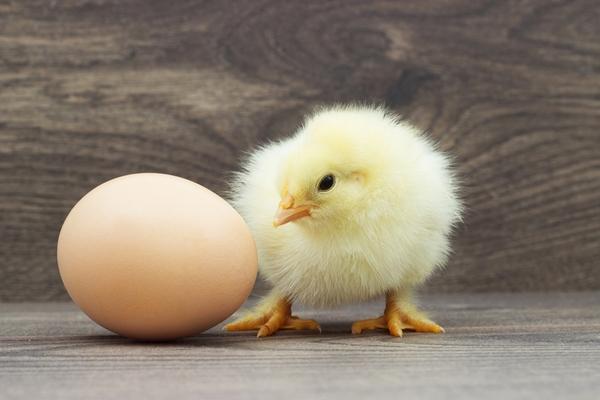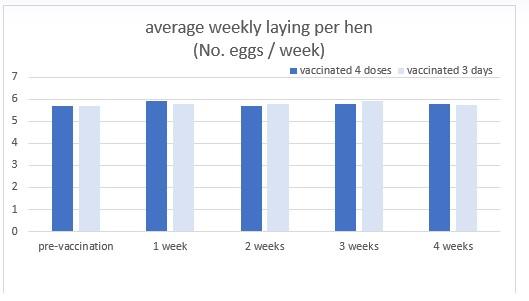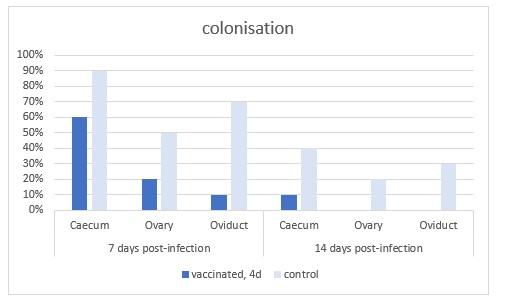
Content sponsored by:
Calier
Salmonella in Poultry: Is it safe to vaccinate during the egg production period?
Published: August 6, 2021
By: Laboratorios Calier

The vaccination of laying hens with live vaccines against Salmonella Enteritidis applied in a 3-dose vaccination regimen during rearing has been one of the measures implemented that has reduced the prevalence of Salmonella in poultry and therefore also the risk of transmission of salmonellosis to humans through the consumption of contaminated eggs. The current trend of extending the production period beyond the 90th week of life led Calier to consider introducing a fourth dose of the live Primun Salmonella E vaccine during laying to ensure that the poultry were protected until the end of a lengthy productive period.
- Is its application safe during laying?
- Does egg production decrease in vaccinated poultry?
- Can poultry vaccinated during laying excrete the vaccine strain?
- How do we demonstrate that the poultry are protected?
IS VACCINATION DURING LAYING SAFE? CAN LAYING BE REDUCED?
Any negative alteration in the health status of the poultry and in productive data would be detrimental to the application of the vaccine. Guaranteeing the safety of the application of a fourth vaccination in laying was one of the key points of the study.
The administration of the vaccine dose was carried out at week 55 of life in layers on a commercial farm vaccinated with the 3 recommended doses of Primun Salmonella E during rearing and which received the fourth dose at an experimental facility.
The hens were in good health over the month after the application of the fourth dose, presenting no clinical signs or adverse reactions. In addition, the weekly egg production was obtained and the mean of two weeks before vaccination was compared to the mean weekly production in the month after the application of the fourth dose. The results showed that there was no negative effect on laying. On the other hand, the data from the same batch of hens that remained in the commercial farm and that had received only the 3 doses of vaccine indicated similar weekly production averages.

Fig. 1. Average weekly eggs per bird before and after vaccination and comparison with field results (hens vaccinated with 3 doses)
CAN VACCINATED POULTRY EXCRETE THE VACCINE STRAIN?
After the administration of a live vaccine during laying, the main concern, albeit attenuated, is where the vaccine strain goes and whether vaccinated animals can excrete it. In order to study its dissemination and possible excretion, its presence in the cloaca, egg and internal organs was analysed.
The excretion of the vaccine strain was ruled out after cloacal swabs were analysed for 2 weeks post-vaccination (1, 7, 14 d after vaccination). All the samples tested negative for Salmonella spp, indicating that the vaccinated animals did not excrete the vaccine strain via the cloaca.
After the application of the fourth dose, the eggs produced by the vaccinated poultry were analysed for a month to determine the presence of the vaccine strain, and all the samples (including the shells and inner content) were negative for the isolation of Salmonella. Therefore, the hens were seen to lay Salmonella-free eggs (days 1, 3, 5, 7, 10, 14, 21 and 28).
The internal organs were also tested for the presence of the vaccine strain by sacrificing animals after the fourth dose and collecting samples of internal organs (liver, spleen, ovary, oviduct and caecum). On the day after vaccination, 3 positive samples were detected, corresponding to 2 animals, specifically two livers and a spleen, although on the other days (day 7 and day 14) all the samples were negative, indicating that the strain has a low colonisation capacity, albeit sufficient to produce a good immune response.
HOW DO WE DEMONSTRATE THAT THE POULTRY ARE PROTECTED?
The best way to demonstrate that poultry are protected against Salmonella Enteritidis is by experimental infection with field strains and by evaluating their protection. This was done by analysing the vaccinated animals' capacity to reduce colonisation in the internal organs by these field strains and to reduce their excretion through the cloaca (parameters indicated in pharmacopoeia to demonstrate the efficacy of vaccines against Salmonella). This was done at 95 weeks of age, with the addition of a group of unvaccinated control hens that were also infected.
The group vaccinated with the four doses presented a greater tendency to reduce the excretion of the challenge strain, since as of the second week it ceased to excrete the field strain, while the unvaccinated control group continued to excrete the challenge strain at week three. Excretion was determined by analysing cloacal swab samples from all the animals in both groups up to 21 days after experimental infection.

Fig. 2 Detection of the challenge strain in cloacal swabs (Excretion)
The reduction in the colonisation of internal organs was evaluated 7 and 14 days after the experimental infection by obtaining samples from the caecum, spleen, liver, ovary and oviduct of the animals of both groups to detect the presence of the challenge strain. The percentage of samples positive to the challenge strain was lower in the vaccinated group than in the control group 7 and 14 days after the challenge. These differences were statistically significant, hence it may be concluded that a reduction in colonisation was achieved.

Fig. 3 Detection of the challenge strain in internal organs (Colonisation)
On analysis of the target organs involved in the possible contamination of the egg, that is: reproductive organs such as ovary and oviduct (involved in transovarian contamination in content) and caecum (through the excretion of faeces that would contaminate the shell), a high reduction was detected in the animals vaccinated on day 7, which was even more accentuated on day 14, when the infection was completely eliminated from the oviduct ovary.

Fig. 4 Detection of the challenge strain in ovary, oviduct and caecum
Conclusions
The results clearly indicate that vaccination against Salmonella Enteritidis during laying is an indispensable tool in controlling Salmonella in poultry in long production periods and high pathogen prevalence. Since it protects the hens until the end of the laying, meaning that the vaccine is totally safe.
This is a new tool with a ONE HEALTH (human, animal and environmental safety) approach, as not only do we protect the layers from infection, but we also ensure that the eggs are free of possible field Salmonella, since it has been demonstrated that egg contamination is avoided by eliminating colonisation of the reproductive tract and reducing possible faecal contamination from the intestine that could come into contact with the egg.
In the study conducted with Primun Salmonella E, the vaccination schedule of three doses during rearing and a fourth dose during laying is safe and protects layers subjected to prolonged laying cycles until the end of laying.
Related topics
Join to be able to comment.
Once you join Engormix, you will be able to participate in all content and forums.
* Required information
Would you like to discuss another topic? Create a new post to engage with experts in the community.
Create a post.jpg&w=3840&q=75)